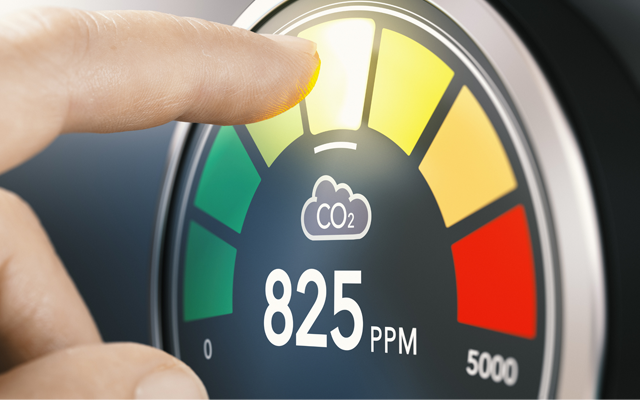April 22 marks Earth Day, a momentous occasion to pay homage to our extraordinary planet. Join us in commemorating this day as we reflect on environmental issues, climate change, global warming, and the significance of environmental preservation and sustainability. Earth Day serves as a poignant reminder for us to unite, take action, and strive for a healthier planet and a brighter future.
Through a multitude different types of events, toolkits, education, resources and initiatives, our goal is to ignite awareness and concern, inspire transformative change, make relationships and cultivate a profound connection with life and nature. Let us band together in our endeavors to protect and safeguard the Earth today and for the generations yet to come. Together, our collective efforts and knowledge can yield the solutions with a meaningful impact on nature and pave the way for a more sustainable world.
Introduction:
Since its inception in 1970, Earth Day has served as a rallying cry for environmental advocacy, education and action. What began as a grassroots movement in the United States has evolved into a global phenomenon, mobilizing billions of people to protect and preserve the planet. As we commemorate Earth Day each year on April 22nd, it’s essential to reflect on the journey of the modern environmental movement and explore how individuals can contribute to a more sustainable future through home improvement initiatives. In this comprehensive guide, we’ll delve into the origins and history of Earth Day, its impact on environmental policy, and practical strategies for eco-friendly home improvement projects.
The Origins of Earth Day: A Call to Action
In the decades preceding the country’ first Earth Day in 1970, citizens’ environmental concerns and health concerns were often overshadowed by industrial growth and economic prosperity. Rachel Carson’s groundbreaking book, “Silent Spring,” published in 1962, served as a wake-up call, highlighting the detrimental effects consequences of pollution on human health and the environment. However, it was Senator Gaylord Nelson’s vision for earth day that galvanized the nation into action.
Inspired by the anti-war protests of the 1960s and alarmed by the environmental degradation the country had witnessed during a massive oil spill in Santa Barbara, California, Senator Nelson conceived the idea of a nationwide teach-in to raise awareness about environmental issues. Teaming up with land conservationist Pete McCloskey and activist Denis Hayes, Senator Nelson orchestrated the country’ first Earth Day on April 22, 1970.
The Impact of Earth Day: A Catalyst for Change
Earth Day 1970 captured the imagination of millions of Americans billion people the world over, transcending political and social divides to unite individuals in support of a common cause. Over 20 million people participated in rallies, marches, and educational events, demanding action to the climate crisis, protect and keep water resources and address pollution, deforestation, and habitat destruction. The success of Earth Day catalyzed a wave of environmental legislation, including the creation of the United States Environmental Protection Agency (EPA) and landmark laws such as the Clean Air Act and the Clean Water Act.
Connecting Earth Day with Home Improvement
While Earth Day serves as an annual reminder to citizens of the world of the importance of environmental stewardship and conservation, sustainability is a commitment that extends beyond a single day. One significant way individuals can contribute to a healthier planet is through eco-conscious home improvement projects. By making sustainable choices in building materials, energy efficiency solutions, and water conservation, homeowners can reduce their environmental footprint and create healthier living spaces.
Practical Strategies for Sustainable Home Improvement
Energy Efficiency Upgrades:
Start by assessing your home or business’s energy usage and identifying areas for improvement. Installing energy-efficient appliances, LED lighting, and programmable thermostats can significantly reduce your business’ energy consumption and lower utility bills.
Energy Efficiency Upgrades:
Start by assessing your home’s energy usage and identifying areas where you can reduce power consumption. This may involve upgrading to energy-efficient appliances, for example installing Solar Panels, LED lighting, improving insulation, and sealing drafts to minimize heating and cooling losses. Investing in renewable energy sources such as solar panels or geothermal heating systems can further reduce your reliance on fossil fuels and lower your carbon footprint on climate change.,.
Water Conservation Measures:
Implement water-saving fixtures and practices to reduce water waste in your home. Install low-flow showerheads and faucets, repair leaky pipes and fixtures, and consider installing a rainwater harvesting system to collect and reuse water for irrigation or other non-potable uses. Landscaping with drought-tolerant plants and using mulch to retain soil moisture can also help conserve water outdoors.
Sustainable Building Materials:
When undertaking renovation or construction projects, choose environmentally friendly building materials that minimize environmental impact. Opt for responsibly sourced wood products, recycled or reclaimed materials, and low-VOC (volatile organic compound) paints and finishes to improve indoor air quality and reduce off-gassing. Consider alternatives to traditional building materials, such as bamboo flooring, recycled glass countertops, and eco-friendly insulation made from recycled materials.
Waste Reduction and Recycling:
Minimize construction waste by planning carefully, reusing materials whenever possible, and recycling or repurposing materials that are no longer needed. Donate usable building materials to local charities or Habitat for Humanity’s ReStore program, where they can be sold or reused in other projects. Implement a composting system for organic waste to divert food scraps and yard debris from landfills and create nutrient-rich soil for gardening.
Indoor Air Quality Improvement:
Pay attention to your health and indoor air quality when selecting materials and products for your home. Choose low-VOC paints, adhesives, and sealants to minimize off-gassing and indoor air pollution. Use natural ventilation whenever possible to bring fresh air into your home and reduce reliance on mechanical systems. Consider incorporating houseplants into your interior design to help filter indoor air and improve your health and overall air quality.
As we commemorate Earth Day and reflect on the journey of the environmental movement, let us recognize the power of collective action in driving positive climate change together. By using green economy and embracing sustainable practices in our homes and communities, we can honor the legacy of Earth Day and pave the way for a greener, healthier planet for future generations. Whether it’s through energy-efficient upgrades, water conservation measures, or eco-friendly building materials, every individual has the opportunity to make a difference in protecting our environment better future us. Together, we can make climate change and build a more sustainable future for all.




















